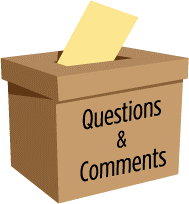Packaging and Shipping
An important aspect of containment is proper packaging and shipping of infectious substances, which is outlined in the United States Department of Transportation Hazardous Materials Regulations.
49 CFR 173.199 and IATA Packing Instruction 650 apply to transport of cultures by the courier, and transport of UN 3373, Biological substance, Category B patient specimens by mail, FedEx Express, or UPS (there are some exception that include courier transport in 49 CFR 173.134 (b).
Transport of samples classified as Category A should be packaged accordingly, regardless of mode of transport. You can find the DOT's packaging requirements in 49 CFR 173.196. Additional guidance can be found in IATA Packing Instruction 620.
On the IATA website, you can purchase the complete IATA Dangerous Goods Regulations (DGR) manual or a smaller Infectious Substances Shipping Regulations manual. You can also find information on air transport of dry ice and on completing a Shipper's Declaration on the IATA page for Dangerous Goods Documentation.
There are also many free resources available you can use as references to ensure you are transporting samples properly. Some of these are listed below:
CDC's UN 2814 Infectious substance, Category A and UN 3373 Biological substance, Category B schematic
United States Department of Transportation (DOT) " Transporting Infectious Substances Overview" and Transporting Infectious Substances Safely
World Health Organization " Guidance on regulations for the Transport of Infectious Substances"
American Society for Microbiology (ASM) Packing and Shipping Infectious Substances
Training:
Anyone involved in any part of the process of sample transport should be trained and subsequently certified by their supervisor. They must follow all appropriate regulations, guidelines, and manufacturer's instructions for the packaging used. Recurrent training is required every three years by DOT (i.e., courier transport) and every two years by some accreditation agencies and the International Air Transport Association (IATA), which issues guidance for transport by air (i.e., transport by UPS and FedEx Express). Training is outlined.
You can find all of the above information and more, including package evaluations and schematics in the APHL Packaging and Shipping Evaluation Tool, available online at https://www.aphl.org/aboutAPHL/publications/Documents/PHPR-2021-Packaging-Shipping-Evaluation-Tool.pdf
MTPHL plans to continue to host training once per quarter. Dates and training format (virtual or live) will be published in the Sentinel Newsletter and announced on the laboratory portal.
Please contact Crystal Fortune, (406) 444-0930, or by email for questions concerning training and safe transport of infectious substances.


